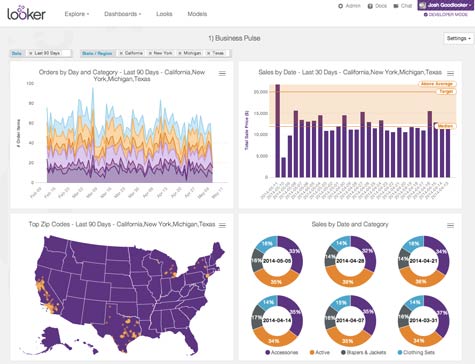For some time now, organizations have been investing in separate data visualization tools to make sense of the data that resides inside a business intelligence or analytics application. Usually they do this because the visualization tools provided by the application vendor have been lacking.
Now, BI vendors are moving to rectify that situation. For example, the latest release of Looker’s namesake BI application includes a visualization framework through which a business analyst can more easily curate data on behalf of a business user.
Looker CEO Frank Bien says beyond making it easier for users to explore data, the fact that the visualization framework is provided within the context of the BI application means that it’s a lot easier to maintain one version of the truth about the state of the business.
As part of that framework, Looker is also providing in-browser application development tools that make it easier for users to discover business insights on their own.
With this release, Looker is also adding support for HP Vertica, Teradata, Aster Data and Oracle databases in addition to the host of other databases it already supports. Additional support for LDAP and two-factor authentication also allows database administrators to manage and control access to those data sources.
Designed to run within a browser, Looker eliminates the need to build a dedicated data warehouse for BI applications by being able to run natively against multiple data sources because the application server is built into the application, says Bien.
It’s not likely that IT organizations are going to be getting rid of the investments they’ve already made in BI applications any time soon. But going forward, they’ll find that the total cost of standing up a BI environment is about to become substantially less.




